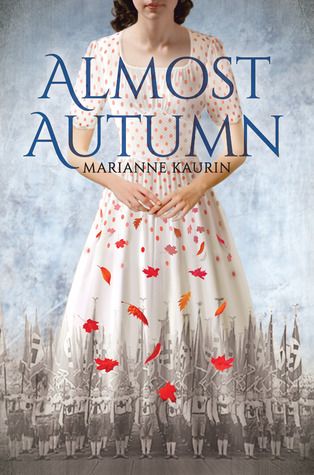 ALMOST AUTUMN by Marianne Kaurin and Rosie Hedger, Arthur A. Levine Books; Tra edition, Jan. 3, 2017, Hardcover, $17.99 (young adult)
ALMOST AUTUMN by Marianne Kaurin and Rosie Hedger, Arthur A. Levine Books; Tra edition, Jan. 3, 2017, Hardcover, $17.99 (young adult)
It seems as if most fictional WWII novels take place in a limited number of countries. What first appealed to me about Marianne Kaurin’s Almost Autumn was, of course, the cover and the setting — Norway.
Almost Autumn opens in 1942 Oslo. It’s October, and 15-year-old Ilse Stern is waiting to meet her next-door neighbor Hermann for their first date. Ilse has been waiting for this date for a long time — she’s had a crush on Hermann for as long as she can remember — but he never shows up.
Hermann desperately wants to go out with Ilse, but he has other responsibilities, ones that have life-and-death consequences. Hermann is secretly working in the Resistance, helping Norwegian Jews flee the country. The work is overwhelming, and it seems Hermann must lie to everyone in order to accomplish it.
Hermann isn’t the only one struggling to make the right choice. As life under German occupation goes on, Jewish families struggle, and neighbors must decide which side they are on.
Almost Autumn is told from multiple points of view, in many cases adding to the chaos of the German occupation. But among the chaos are little moments of everyday life, of love, of family. Combined, these moments create a broad picture narrowed down into digestible bites.
Kaurin’s prose, translated to English by Rosie Hedger, has a sparse almost clipped feel to it. While this could be off-putting in some situations, it only serves to heighten the uncertainty and tension felt throughout Almost Autumn.
In many ways, Almost Autumn is hard to read. You go into it knowing the eventual outcome for many of the characters, and yet there is a hopefulness that springs throughout that makes your care for the characters and the lives that are forever changed.
